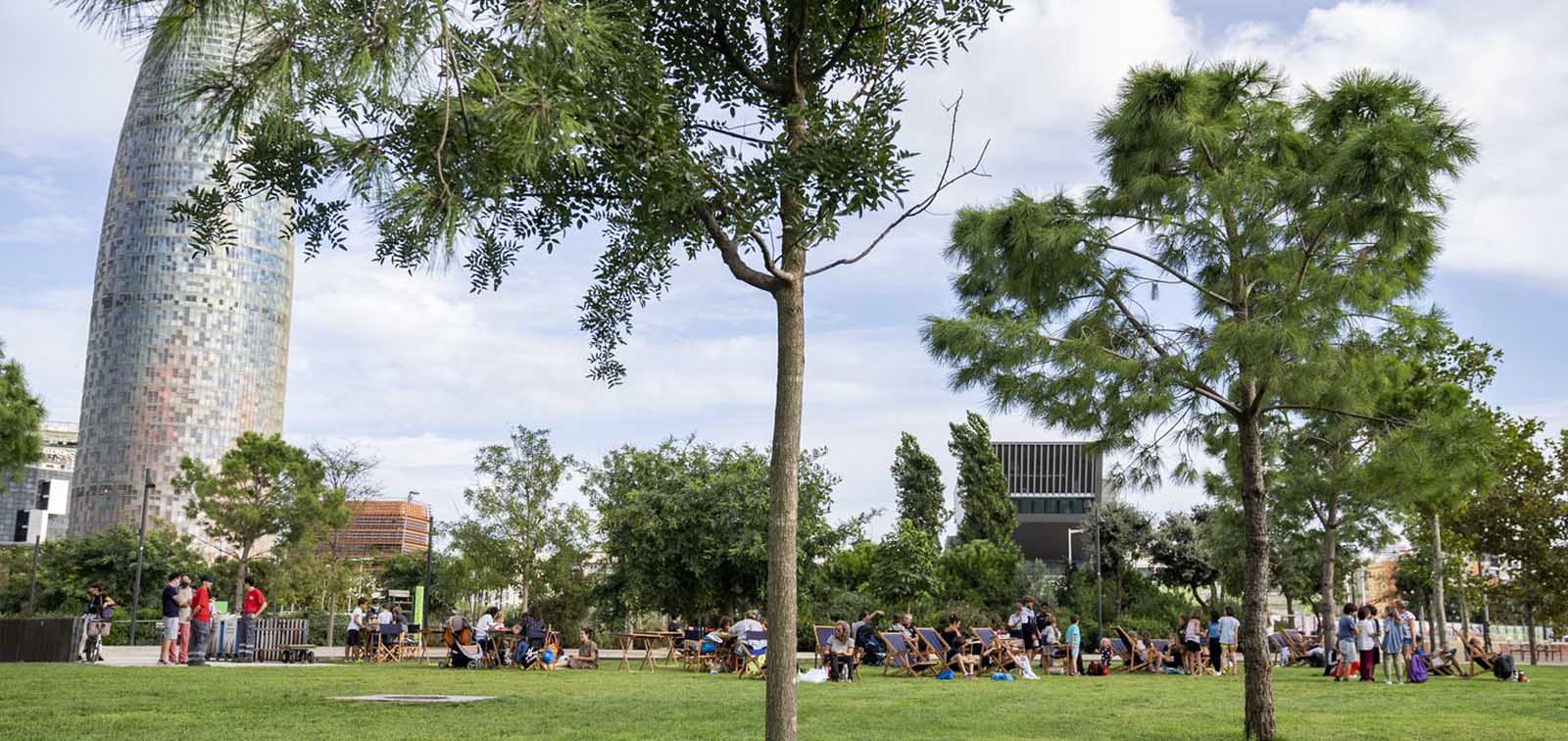Green Spaces Associated with Better Childhood Development Due to Reductions in the Adverse Effects of Air Pollution and Noise
A Canadian study of almost 30,000 children explores why green infrastructure may be beneficial to children’s health
13.10.2021
Most of the studies undertaken to date have reported an association between exposure to greenspace and better childhood development outcomes, although the reasons for the association remained unclear. Now, the findings of a new study by the Barcelona Institute for Global Health (ISGlobal), an institution supported by the ”la Caixa” Foundation, and the University of British Columbia (UBC) indicate that these benefits are, in part, the result of reductions in the adverse effects of traffic-related exposures, in particular nitrogen dioxide (NO2) air pollution.
Greenspace exposure has been linked to many health benefits in adults, including increased life expectancy, improved mental and general health, reduced stress and better cognitive development. There is less evidence for the association in childhood, but researchers have found links between greenspace exposure and appropriate birth weight in addition to better scores for attention capacity, concentration, emotional and behavioural development and social skills. One ISGlobal study concluded that children who have grown up in greener neighbourhoods tend to have larger volumes of white and grey matter in certain areas of the brain.
The objective of this new study, just published in The Lancet Planetary Health, was to investigate the association between residential exposure to greenspace and early childhood development and to assess the extent to which this link is mediated by reductions in traffic-related air pollution and noise.
The study, funded by the Canadian Institute of Health Research (CIHR), followed a birth cohort of almost 30,000 children from birth to age five in the metropolitan area of Vancouver, Canada. The children’s development was assessed by kindergarten teachers using an existing population-level instrument designed to measure the child’s ability to meet age-appropriate developmental expectations. The Early Development Instrument (EDI) is a questionnaire divided into five domains: physical health and well-being; social competence; emotional maturity; language and cognitive development; and communication skills and general knowledge.
The researchers also estimated exposure to greenspace, noise and traffic-related air pollution—fine particulate matter (PM2.5) and NO2 —in each child’s neighbourhood. Greenspace was measured using a new methodology based on satellite imagery. Each child’s greenspace exposure was based on the values measured within 250 meters of their residential postal codes. The tool used quantifies urban vegetation more accurately than other commonly used metrics, such the normalised difference vegetation index.
The findings showed that “living in an area where there is greenery and greenspace, such as parks and gardens and trees on the streets, was associated with better developmental outcomes in early childhood,” explains Ingrid Jarvis, first author of the study and researcher at the University of British Columbia (Vancouver, Canada). Jarvis also notes that “the relationship between residential greenspace and early childhood development outcomes was mediated, to a large extent, by reductions in NO2 air pollution levels and, to a lesser degree, by reductions in noise and PM2.5 pollution in the neighbourhood”.
“Although Metro Vancouver is a region with relatively high proportions of vegetation cover and low concentrations of air pollution, general conclusions of this study can be extrapolated to Europe”, concludes Matilda van den Bosch, the ISGlobal researcher who coordinated the study. While more studies are needed, “these findings suggest that planning strategies aimed at increasing our urban greenspace will have a positive effect on early childhood development and may confer lifelong health benefits”, she adds. The researcher goes on to stress the implications of the findings: “the evidence generated by our research supports the implementation of green infrastructure interventions and healthy urban planning”.
Reference
Ingrid Jarvis, Zoë Davis, Hind Sbihi, Michael Brauer, Agatha Czekajlo, Hugh W Davies, Sarah E Gergel, Martin Guhn, Michael Jerrett, Mieke Koehoorn, Tim F Oberlander, Jason Su, Matilda van den Bosch. Assessing the association between lifetime exposure to greenspace and early childhood development and the mediation effects of air pollution and noise in Canada: a population-based birth cohort study. The Lancet Planetary Health. October 2021. doi.org/10.1016/S2542-5196(21)00235-7.
Funding
This work was supported by data made accessible via Population Data BC, the Canadian Urban Environmental Health Research Consortium, and the Integrated Remote Sensing Studio at the University of British Columbia. All inferences, opinions, and conclusions drawn in this study are those of the authors, and do not reflect the opinions or policies of the Data Steward(s).





